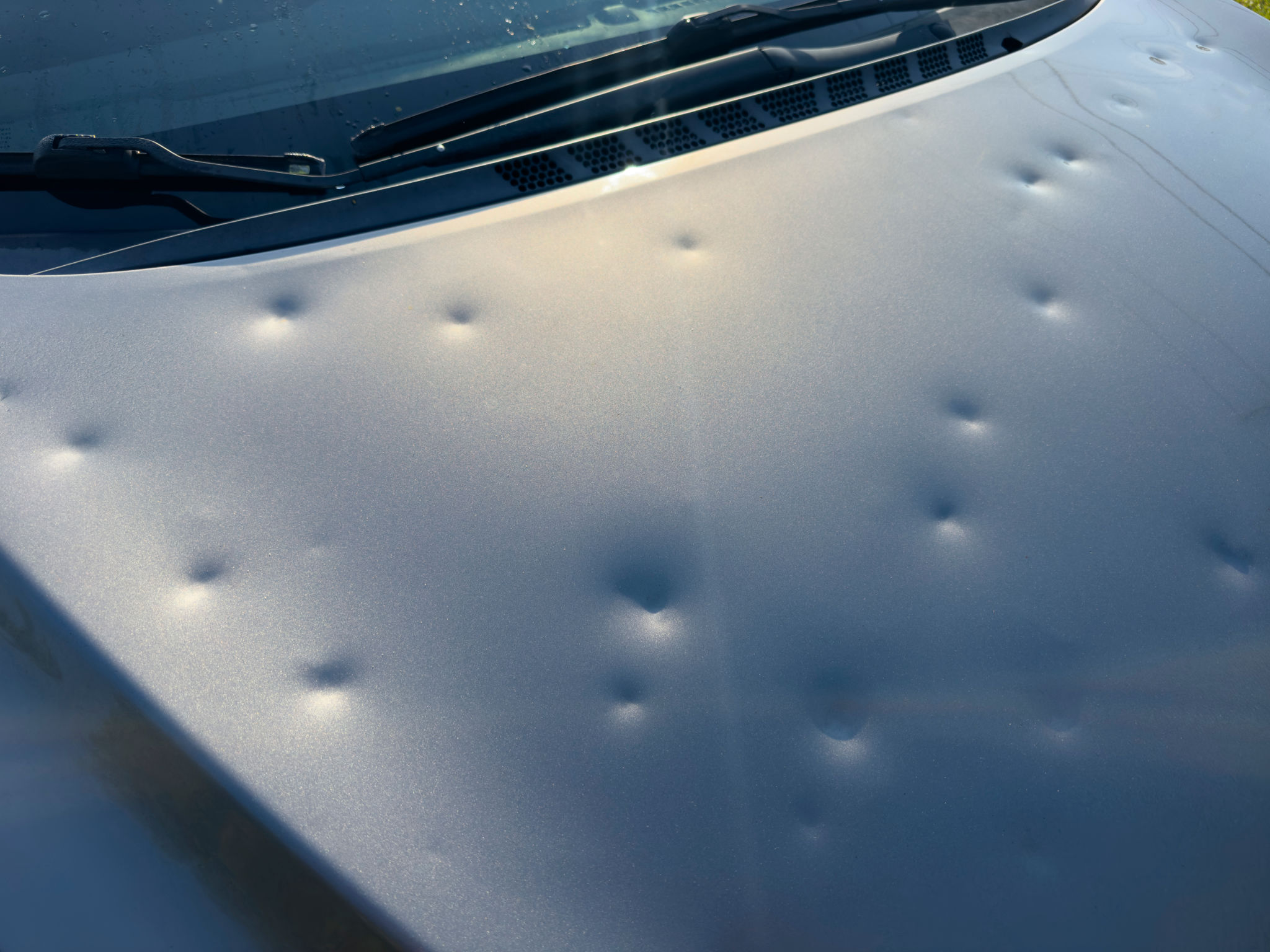The Ultimate Guide to Vehicle Hail Damage Repair: What You Need to Know
Understanding Hail Damage
Hail storms can be surprisingly destructive, leaving vehicles with unsightly dents and dings. This kind of damage is not just cosmetic; it can impact the resale value of your car and potentially lead to rust if left untreated. It's crucial to understand the extent of damage hail can cause and the options available for repair.

Hailstones can vary in size, from small pebbles to large golf balls, and the impact force can be significant. The severity of the damage often depends on the size and velocity of the hailstones, as well as the duration of the storm. Even a short-lived hailstorm can cause extensive damage, especially to cars parked outdoors without any protection.
Assessing the Damage
Before deciding on a repair method, it's essential to assess the damage accurately. Start by examining your vehicle in good lighting conditions. Look for dents on the hood, roof, trunk, and side panels. Pay special attention to areas where paint has chipped away, as these spots are prone to rust.

If you're unsure about the extent of the damage, consider hiring a professional to conduct a thorough inspection. Many auto body shops offer free estimates and can provide a detailed report of the affected areas. A professional assessment ensures you won't overlook any hidden damage that could cause problems later.
Repair Options
Paintless Dent Repair (PDR)
PDR is a popular option for fixing hail damage. This technique involves using specialized tools to gently massage dents back into their original shape without affecting the paint job. It's cost-effective and environmentally friendly since it eliminates the need for painting and fillers.

Traditional Body Shop Repair
In cases where the paint has been damaged or the dents are too severe for PDR, traditional repair methods might be necessary. This process involves sanding, filling, and repainting affected areas. While effective, it is typically more expensive and time-consuming than PDR.
Filing an Insurance Claim
If your vehicle has suffered significant hail damage, filing an insurance claim might be a viable option. Review your policy to ensure it covers hail damage, as not all policies include it. Document the damage with photographs and gather estimates from repair shops before reaching out to your insurance provider.

Working with an insurance adjuster can streamline the process and ensure you receive adequate compensation for repairs. Keep in mind that filing a claim could affect your premiums, so weigh the benefits carefully before proceeding.
Preventing Future Hail Damage
While you can't control the weather, there are steps you can take to minimize future hail damage. Whenever possible, park your vehicle in a garage or under a carport during stormy weather. If you must park outside, consider investing in a car cover specifically designed to withstand hail impacts.

Staying informed about weather forecasts can also help you take proactive measures. Many areas prone to hailstorms have alert systems in place that notify residents of impending storms. Taking these precautions can save you time and money on repairs in the long run.
